Renfield is one of Dracula’s most intriguing and charismatic characters. DR KAJA FRANCK profiles the notorious madman…
In my previous article, ‘Top 5 nastiest and goriest scenes from Dracula’, I considered the fate of Renfield at the hands of the Count.
In this article, I want to think in more detail about this inscrutable character who is characterised as neither hero nor villain.
Instead, Renfield is a madman, consigned to the asylum in which Dr Seward works.
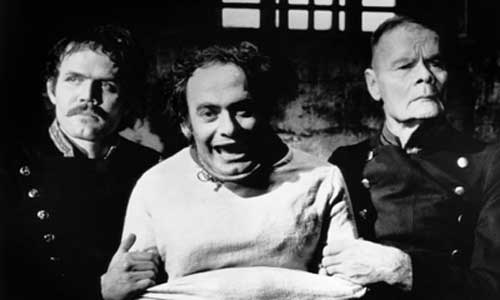
He is introduced in the doctor’s diary as a ‘case’ – one which the doctor finds particularly engaging. Dr Seward describes him as a ‘zoophagous (life-eating) maniac’ (Dracula) and describes his habit of eating flies, spiders and birds. Indeed, Renfield goes so far as to require a kitten so that he can eat that as well.
Renfield understands ‘blood is the life’
In his notebook, which Dr Seward takes of control of by drugging him and stealing it, Renfield appears to be creating a crude food chain pyramid, slowly amassing the amount of life force he consumes.
On seeing the doctor’s disgust, Renfield tells him that eating flies is ‘very good and wholesome; that it was life, strong life, and gave life to him’ (Dracula).
Notably, Dr Seward fails to acknowledge that humans are constantly eating other living creatures; what perturbs him, then, is not the consumption of life but a matter of designation: flies are not considered to be ‘normal’ food.
However, Renfield’s abnormal appetite and desire to consume life hints at his later connection to Dracula to whom ‘blood is the life’.
As the novel progresses, Renfield’s connection becomes apparent.
In an act of literary irony, the reader is in the position of realising more about Renfield’s relationship with the Count than the doctor.
Once the Count arrives in Britain, Renfield goes through periods of mania, calling on his ‘Master’. He attempts to break free from the asylum in order to gain access to Carfax Abbey where Dracula resides.
When Dr Seward tries to console him with a promise of a kitten or asks about his spider collection, Renfield dismisses him in a manner that suggests he has found a higher purpose.
Certainly, Renfield’s new hope is that with the help of Dracula he can move from consuming life as a whole, in the form of animals, to consuming the essence of life – blood. Instead, he is killed by his Master, never escaping his role as a cringing and fawning servant.
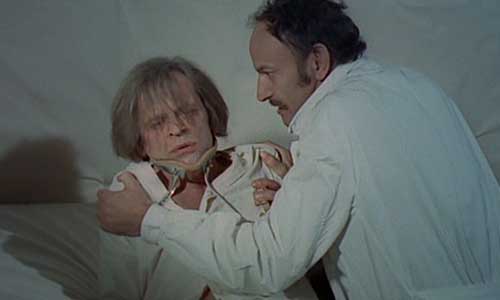
Renfield is also depicted as being connected to the moon.
When relating to story of how Dracula entered his cell, Renfield describes how ‘the Moon herself has often come in through the tiniest crack and has stood before me in all her size and splendour’ (Dracula).
Throughout the novel, Dracula is also related to the moon. Following Renfield’s dying confessional, Mina is found feeding on Dracula on a night when the ‘moonlight was so bright’ (Dracula).
This network of relations reinforces the connection between Renfield and Dracula.
The alternate term for madman, lunatic comes from the same root as the world lunar – relating to the moon.
The parallel between the moon, the night and Dracula makes Renfield appear the character to whom Dracula is most likely to appear.
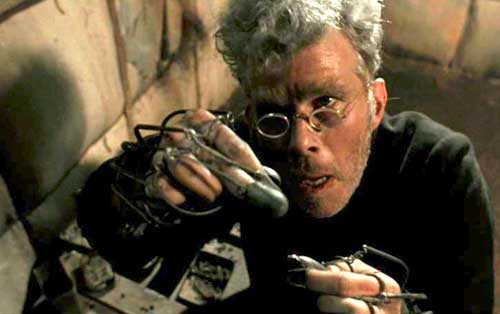
Like the Count, Renfield’s behaviour is only reported second-hand. The reader is unable to read his journal to understand the man in his own words.
Instead, in the same way that Van Helsing creates an (un)natural history of the vampiric Dracula, Dr Seward’s diary never allows Renfield to move much beyond being a case study.
Renfield background never revealed
Dr Seward does not explain why Renfield was sent to the asylum nor his background. Does he have family? Loved ones?
We are left to fill in the blanks and decide the morality of such a character.
We are also left to wonder whether, having been rejected from ‘normal’ society as a madman, it seems inevitable that Renfield would seek solace in the form of another outcast, one who could grant him a freedom which he cannot receive in the repressive Victorian society.
And yet, to a certain extent, Renfield retains his humanity. He appears to care deeply about Mina and his final act is to protect her, saving her from Dracula’s depredations.
Whilst it is possible to read Renfield’s betrayal of the Count as an act of jealousy that Mina has been chosen over him, I would suggest that it suggests his inability to disconnect himself from the force of life that is humanity.
There are, of course, some serious issues with Bram Stoker’s depiction of Renfield.
Firstly, despite the apparent forward thinking nature of Dr Seward’s approach to mental health issues, his asylum, complete with strait jackets, stone-floored cells and bars across the windows, is essentially a glorified prison.
Even a little research into the state of mental health care during the Victorian period brings forth a litany of horrors that far outweigh anything within the novel itself.
The depiction of Dr Seward’s asylum in the novel hints at these terrible crimes but, in general, the reader is given a far more palatable version of events, one which would appease the middle-class reader who may not want to consider the fate of those incarcerated in an asylum.
(It’s also worth considering to what extent our current attitudes to mental health are still mired in these early Victorian approaches).
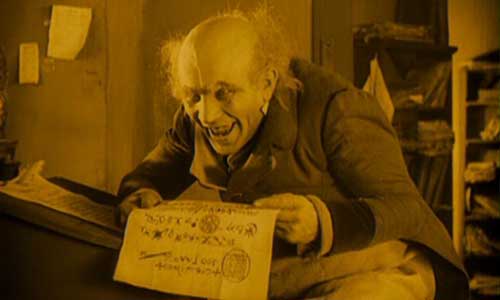
Moreover, Renfield himself functions less as a character, in some respects, and more as a narrative device. His ‘madness’ is performative and not particularly believable.
The sudden swoops from mania to lucidity, his deeply unpleasant habit of eating flies, his ability to communicate with Dracula: all these traits become enmeshed with Stoker’s depiction of the archetypal ‘madman’.
In this respect, Renfield’s character resembles the representation of madness and the role of the fool within Shakespeare’s plays.
What appears to be madness in Renfield’s character actually contains clarity regarding the threat of Dracula. Renfield’s cryptic comments contain the information required to hunt down Dracula and he is perhaps the sanest character in his ability to acknowledge the Count’s true nature from the outset, unlike the others who see only what reason and logic will allow.
Within the novel, Renfield remains one of the most enigmatic and charismatic characters. His presence disrupts the formality and reasoned logic displayed by the Crew of Light.
He is a puzzle, the solving of which allows Van Helsing and his followers to bring down Dracula.
Indeed, in a world in which a professor finds himself leading a doctor, a lord, a solicitor and his wife, and a gunslinger in a battle against supernatural forces, Renfield’s ‘madness’ appears a necessary requirement to survive such unconscionable evil.
Top 10 Renfield Quotes from Dracula
- “The blood is the life! And it shall be mine!” (Chapter 18)
- “Master, I am loyal to you. I will serve you and bring you sustenance.” (Chapter 17)
- “There are worse things awaiting man than death. Oh, I know well. I have studied them!” (Chapter 20)
- “The Master is a great and noble creature, his power beyond imagining.” (Chapter 18)
- “I am his servant, his loyal servant. I do his bidding, and he rewards me with life.” (Chapter 17)
- “The Master’s presence is overwhelming. It consumes me, engulfs me.” (Chapter 18)
- “He has granted me immortality, a gift only bestowed upon his most devoted followers.” (Chapter 17)
- “The Master’s eyes burn like fire, his power radiating from within.” (Chapter 18)
- “I will feast upon the blood of the innocent, for it pleases the Master.” (Chapter 18)
- “The darkness beckons, and I shall forever heed its call.” (Chapter 19)



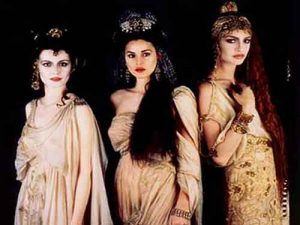




Renfield is a wonderful character – Tom Waits and Dwight Frye were the best!
Informative and well-written, especially the parallel to Shakespeare’s fool, who is nonetheless wise! A parallel could be drawn today in those few who can intuit the truth and mystery of things, whereas the masses are caught up in a distorted group-think and dogma. To me Renfield is a heroic “outsider” figure, whatever his motives were for warning Mina of D.